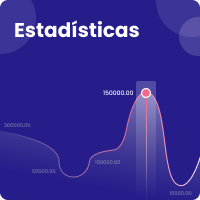High performance serverless architecture for developing Stock Market Deep Learning models
DOI:
https://doi.org/10.26507/paper.2947Palabras clave:
Cloud computing, Deep leaningResumen
Several studies reported in the literature have analyzed the usefulness of various sources of information to predict the price of stock markets. Some of them have focused attention on the predictive power of information from social networks, which by their nature is unstructured and present a large volume of data. However, capturing and processing this information to obtain a mineable view to build predictive models can require vast amounts of computing power and storage, cost-prohibitive for an academic project. Additionally, training deep learning models requires a large consumption of computation, since hundreds of thousands of parameters must be calculated iteratively. The present work proposes a cloud-native architecture that scales elastically at a low cost using serverless technologies, which allows for capturing Twitter messages, performing natural language processing, and training Long-Short-Term- Memory (LSTM) and Convolutional Neural Networks. For each stage of the processing, the computing power used, the cloud storage capacity used, and the costs associated with the execution of each experiment are detailed. The cloud services used are also described, as well as the frameworks and libraries used both for data capture and for the training of Deep Learning models.
Descargas
Citas
Bustos, O. and Pomares, A. (2022). Analysis of social networks publications for stock market movement prediction: methodology and case study in a Spanish-speaking country. In 2022 Congreso Internacional de Innovación y Tendencias en Ingeniería (CONIITI) (pp. 1-5). IEEE. https://doi.org/10.1109/CONIITI57704.2022.9953669
Bustos O. and Pomares A. (2020). Stock market movement forecast: A systematic review. Expert Systems with Applications, 156. https://doi.org/10.1016/j.eswa.2020.113464
Amazon Web Services. (2022, July). Serverless Application Lens – AWS Well-Architected. https://aws.amazon.com/architecture/well-architected/
Bollen, J. Mao, H. and Zeng X. (2011). Twitter mood predicts the stock market. Journal of computational science, 2(1):1–8. https://doi.org/10.1016/j.jocs.2010.12.007
Cavalcante,C. Brasileiro, R. Souza, Nobrega, J. and Oliveira A. (2016). Computational intelligence and financial markets: A survey and future directions. Expert Systems with Applications, 55:194–211. https://doi.org/10.1016/j.eswa.2016.02.006
Fama, E. (1995). Random walks in stock market prices. Financial Analysts Journal, 51, 01. https://doi.org/10.2469/faj.v51.n1.1861
Groß A., Konig, S. and Ebner, M. (2019). Buzzwords build momentum: Global financial twitter sentiment and the aggregate stock market. Expert Systems with Applications, 136:171–186. https://doi.org/10.1016/j.eswa.2019.06.027
Nassirtoussi, A. Aghabozorgi, S. Ying, T. and Ngo, D. (2014). Text mining for market prediction: A systematic review. Expert Systems with Applications, 41(16):7653–7670. https://doi.org/10.1016/j.eswa.2014.06.009
Vu, T. Chang, S. Ha,Q. and Collier, N. (2012). An experiment in integrating sentiment features for tech stock prediction in Twitter. In Proceedings of the workshop on information extraction and entity analytics on social media data, pages 23–38.
Ryan, J. and Ulrich, J. Quantmod (2022): Quantitative Financial Modelling Framework., https://CRAN.R-project.org/package=quantmod
Harmon, (2023). Tweepy [Computer software]. https://doi.org/10.5281/zenodo.7259945
Descargas
Publicado
Cómo citar
Evento
Sección
Licencia
Derechos de autor 2023 Asociación Colombiana de Facultades de Ingeniería - ACOFI

Esta obra está bajo una licencia internacional Creative Commons Atribución-NoComercial-SinDerivadas 4.0.
| Estadísticas de artículo | |
|---|---|
| Vistas de resúmenes | |
| Vistas de PDF | |
| Descargas de PDF | |
| Vistas de HTML | |
| Otras vistas | |








